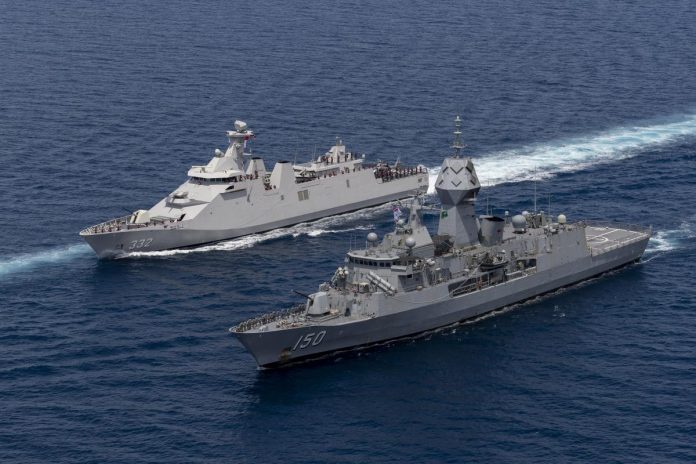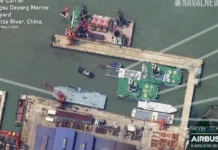
By Jennifer Parker*
We’ve had plenty of defence announcements so far this year. Many have rightly focused on Australia’s situation and vulnerabilities as an island trading nation, one whose daily survival depends on the fuel, fertiliser, pharmaceuticals and other essentials imported by sea.(The Australian Strategic Policy Institute. The Strategist.)
From the glossy documents you could be forgiven for thinking that Australia’s naval capabilities have been strengthened in the short term—that our navy can defend maritime trade and project into the region to contribute to our strategy of deterrence by denial.
The perception of growing naval power is only half true, however.
Ten years from now, when Australia’s first Virginia-class nuclear-powered submarine will have arrived and new general-purpose frigates and Hunter class anti-submarine frigates are emerging from shipyards, the country will have its most potent navy in decades.
But before then its naval power will decline, without significant readjustment of its naval posture, and so will its ability to defend maritime trade. Despite the increased spending over the decade, the alarming fact is that for the next 10 years Australia will have the least capable surface fleet it has had in more than 50 years.
The surface combatant fleet, comprising the frigates and destroyers that constitute the backbone of the navy, will increase to 20 in the 2030s and early 2040s. But it will contract until the early 2030s.
Most reviews of the naval surface fleet over the past 50 years have found a need for 16-20 surface combatants. These assessments were conducted before the rapid militarisation of the region, before China became aggressive in the South China Sea, and before Australia was subjected to its economic coercion.
Australia now has 11 surface combatants. HMAS Anzac, one our eight frigates, will decommission this month, reducing the surface combatant fleet to 10. Then in 2026 the fleet will fall to nine, around half the strength recommended by 50 years of analysis—and this in a time of global tension that has been compared to the period before World War II.
How did we get here? It’s a long story that cannot simply be attributed to the current or former government. It is a story of devaluing naval capability, of delaying decisions and accepting risk where the risk was not fully understood.
But the pivotal question is what to do about the widening gap between needs and capability.
The answer is in naval structure, readiness and posture. We must be bold. For the next 10 years, we must maximise the potency, operational readiness and posture of our remaining ships.
This includes maximising their sea time, with alternate crewing and readiness models. Rather than one crew per ship, we may need multiple crews per ship. The Royal Australian Navy has previously trialled that, and the Royal Navy is doing it now with frigates it deploys to the Middle East.
But what about the implications for the challenged naval workforce? If alternate crewing matters enough, we can make it happen. Historic times call for historic approaches.
But we must go further. To maximise the utility of our diminishing naval assets, we should take a leaf out of the playbook of our AUKUS partners and permanently deploy one of the remaining surface combatants to Southeast Asia.
Basing a frigate in Singapore or the Philippines would increase Australia’s presence in the contested South China Sea, maximising our naval potency during the foreseeable capability gap.
While Australia is spending more on naval capability, during the next decade it will have its least capable naval surface fleet.
In times of historic global tension, the government and navy must take bold action to maximise the operational effectiveness of our remaining fleet. The lifelines of the Australian economy and our way of life may well depend on it.



